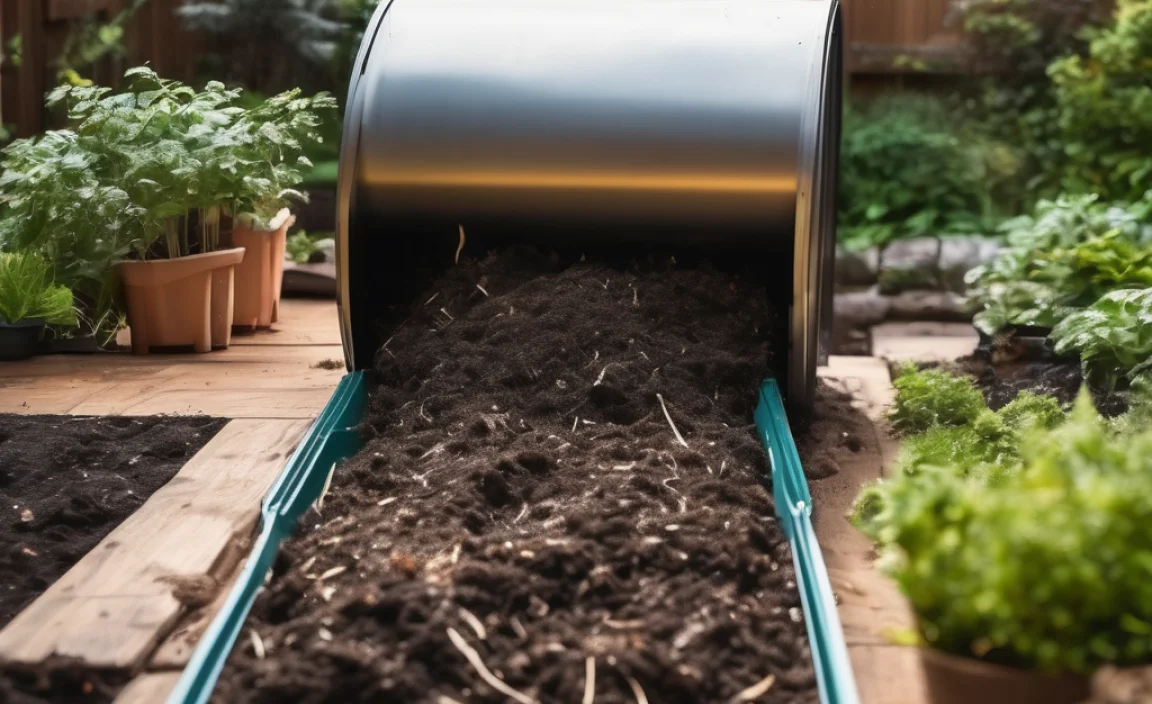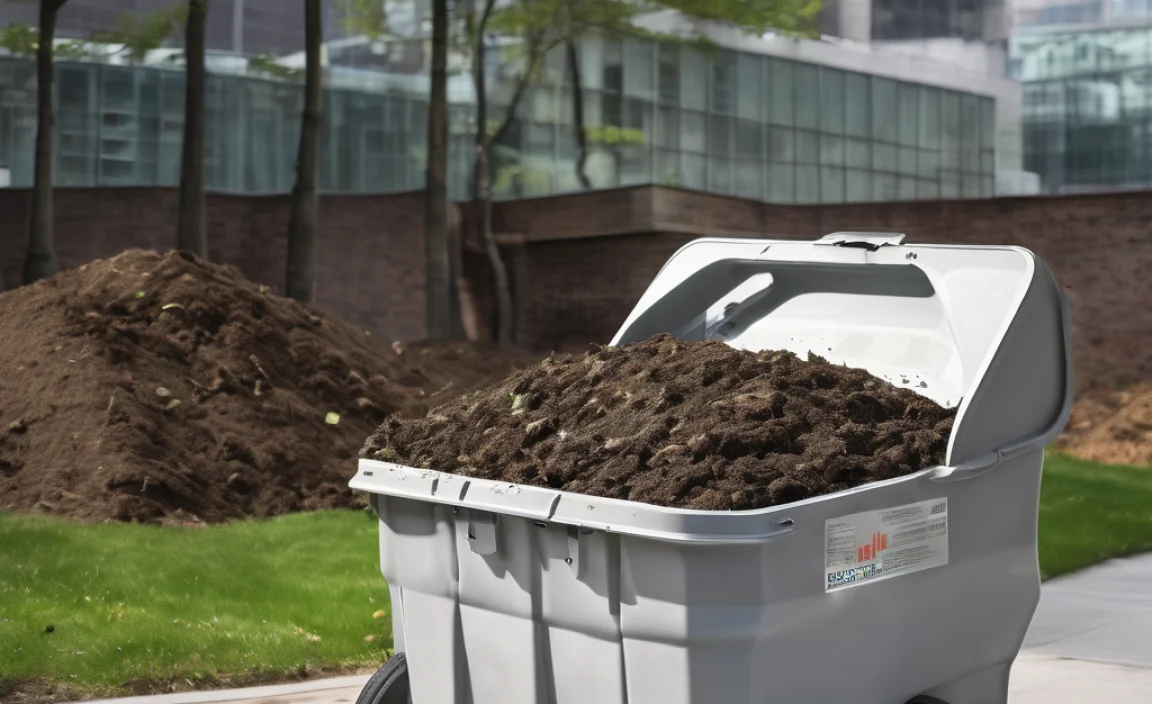Have you ever wondered how to turn kitchen scraps into something great? Backyard composting is a magical process! It’s an adventure where food scraps become plant food. By following a backyard composting step by step guide, you can do it easily. Imagine helping the planet while having fun in your yard. Let’s dive into this exciting journey and learn how to compost at home!
Key Takeaways
- Composting turns waste into nutrient-rich soil.
- Follow a backyard composting step by step for best results.
- Composting reduces waste and benefits the earth.
- All you need is a few simple materials.
- Composting is fun and educational for everyone.
Backyard Composting Step by Step Guide

Composting is a simple way to recycle organic waste. It helps the earth and reduces trash. First, you’ll need a compost bin or pile. Place it in a sunny spot. Gather kitchen scraps like vegetable peels, fruit cores, and coffee grounds. Add yard waste like grass clippings and leaves. Mix these materials to start the composting process. Turn the pile once a week to aerate it. In a few months, your compost will be ready.
- Choose a sunny spot for your bin or pile.
- Collect kitchen scraps and yard waste.
- Mix green and brown materials well.
- Turn the pile weekly for aeration.
- Water the pile if it’s too dry.
- Wait patiently as it decomposes.
- Use finished compost in your garden.
Composting is like cooking. You combine ingredients and wait for them to transform. Watching waste turn into soil can be exciting. It’s a science project right in your backyard. You’ll see how kitchen scraps turn into dark, rich compost. This compost nourishes plants and helps them grow. It’s a rewarding process that benefits the environment and your garden.
Fun Fact or Stats : Composting can reduce household waste by up to 30%!
Choosing the Right Compost Bin
Have you ever picked out a cool gadget or toy? Choosing a compost bin is like that. There are different types to suit your yard. You can buy a bin or make one at home. It’s important to pick the right size. You’ll want a bin that’s big enough for your waste but fits your space. Some bins have lids to keep out curious critters. Others are open to the air. Think about what you need before you choose.
Gathering Compost Materials
Do you know what goes into compost? Not everything can be composted. You need the right mix of materials. “Greens” are items like fruit and veggie scraps. They provide nitrogen. “Browns” are things like dead leaves and paper. They add carbon. Both are important for composting. Avoid adding meat or dairy. They don’t break down well and can smell bad. By choosing the right materials, you’ll make better compost.
The Importance of Aerating Your Pile
Why do we need to aerate the compost pile? Air helps things break down faster. When you turn the pile, you add air. This process is called aeration. It keeps the compost healthy. Without air, the pile becomes smelly and slow to decompose. You can use a pitchfork or shovel to turn it. Make sure to mix everything well. This will help your compost transform quicker into rich soil for your plants.
| Material Type | Examples | Role in Compost | Decomposition Rate |
|---|---|---|---|
| Greens | Vegetable scraps | Provide nitrogen | Fast |
| Browns | Dry leaves | Add carbon | Slow |
| Moisture | Water | Helps microorganisms | Variable |
| Air | Turning the pile | Aerates compost | Essential |
Understanding the Composting Timeline

Did you know composting takes time? It’s not instant like magic. The composting timeline depends on different factors. Temperature, moisture, and materials all play a role. In warm weather, compost breaks down faster. In cooler months, it slows down. It usually takes a few months to a year. Patience is key. Keep an eye on your pile. You’ll notice changes over time. Soon, it will turn into rich, dark compost.
- Warm temperatures speed up composting.
- Cold slows down the process.
- Keep the pile moist but not soggy.
- Turn the pile to add air.
- Look for crumbly, dark soil as the end result.
- First signs of compost may take weeks.
- Complete composting takes several months.
It’s exciting to watch your compost evolve. The heap shrinks as it breaks down. The smell changes from earthy to pleasant. You might even see steam on cool mornings. That’s a sign of active decomposition. When it’s ready, your compost should look like dark, crumbly soil. Use it to enrich your garden, and watch your plants thrive!
Fun Fact or Stats : The average compost pile reduces size by over 50% during breakdown.
Factors Affecting Composting Speed
Have you ever wondered why some things decompose quicker? It depends on several factors. Temperature plays a big part. Warm climates speed up composting. More microorganisms thrive in warmer conditions. Moisture is crucial too. Too wet or too dry slows the process. The size of your materials matters. Smaller pieces break down faster. By adjusting these factors, you can control how quickly your compost is ready.
Identifying When Compost is Ready
When is compost ready to use? It should look like dark soil. The original materials should be unrecognizable. You’ll know it’s ready when it smells earthy and fresh. It should crumble easily in your hands. If it’s still warm, give it more time. Finished compost is full of nutrients. It helps your garden flourish. When ready, use it to feed your plants and see the results!
Using Finished Compost in the Garden
What do you do with finished compost? It’s a garden superhero! Spread it around your plants. It enriches the soil and helps retain moisture. Mix it into your garden beds before planting. It provides essential nutrients. Compost is great for lawns too. Sprinkle it over grass to improve health. Your plants will grow stronger and more vibrant with compost. It’s nature’s way of recycling.
Conclusion
You’ve learned the backyard composting step by step process. With simple steps, you can turn waste into gold. Composting helps reduce trash and enriches your garden. Start your composting adventure today. It’s fun, educational, and great for the earth!
FAQs
Question: What materials can I compost?
Answer: You can compost fruit and vegetable scraps, coffee grounds, and yard waste. Avoid meat, dairy, and oily foods. These don’t break down well and can attract pests. Stick to “greens” for nitrogen and “browns” for carbon.
Question: How long does composting take?
Answer: Composting can take anywhere from a few months to a year. It depends on factors like temperature, moisture, and materials. By following the backyard composting step by step guide, you can speed up the process.
Question: How do I know when my compost is ready?
Answer: Compost is ready when it looks like dark, crumbly soil. It should smell earthy and fresh. You shouldn’t be able to recognize the original materials. If it’s still warm, let it sit longer until it’s fully decomposed.
Question: Why is my compost pile not breaking down?
Answer: If your compost isn’t decomposing, it might be too dry or not getting enough air. Regularly turning the pile and adding water can help. Make sure you have a good mix of “greens” and “browns” as well.
Question: Can I compost in the winter?
Answer: Yes, you can compost in the winter, but the process will slow down. Cold temperatures affect the microorganisms responsible for decomposition. Insulating your pile with straw or a tarp can help maintain heat.
Question: What should I do if my compost smells bad?
Answer: A bad smell usually means the pile is too wet or lacks air. Turn the pile to introduce oxygen. Add more “browns” like dry leaves or shredded paper to balance moisture and improve the smell.


